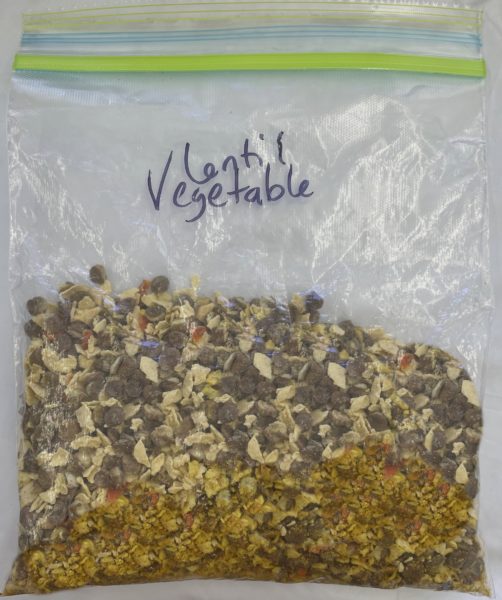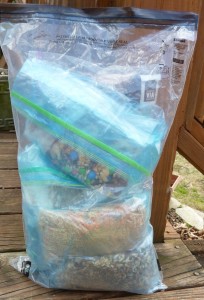The main job of a food storage bag is to prevent moisture and air from permeating the contents inside. Standard household freezer bags are readily available and inexpensive, making them appealing for storing homemade dry foods or repacking commercial backpacking food to reduce space. Storing dry food long-term in non-barrier packaging like plastic freezer bags will allow oxygen and moisture from the surrounding air to absorb into the food, where bacterial contamination and growth can occur. Eventually, the food will become soggy and mold. If this happens, the food will be unsafe to eat. Freezer bags will work okay for storing homemade dry foods short term, up to 3 weeks. Beyond that, we recommend using food-grade packaging or rigid containers with barrier-proof properties, such as mylar, metalized bags, glass jars, or sealed containers.
|
|
Barrier-proof bags for longer-term storage
If you are storing backpacking food longer than 3 weeks or so, you’ll need food packaging made of barrier films which will prevent or slow down the passing of oxygen and moisture through food packaging. Air is roughly 21% oxygen which oxidizes many of the compounds in food and allows for the growth of insects, bacteria, and mold.
Bags use film, a transparent, thin layer of various materials, including plastics, foil, and paper. Films have different oxygen transfer rates (OTR), which is the amount of oxygen that passes through a defined area of film over 24 hours. Film also has a moisture vapor transfer rate (MVTR) representing humidity or moisture transfer from the air. The lower this number, the better the barrier. Aluminum offers the best protection against oxygen and moisture with an OTR of 0, while LLDPE (standard freezer bags and zipper storage bags) allows the most oxygen to pass through.
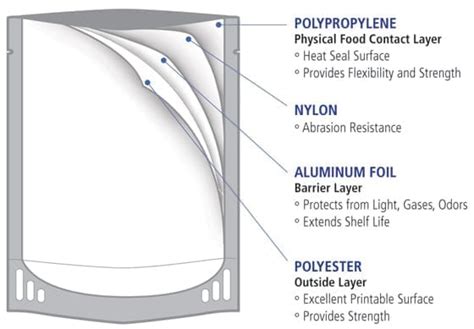
Adding oxygen absorbers will increase the shelf life even further, however oxygen absorbers are likely unnecessary if you squeeze out as much air when closing the bag, store it properly, and consume the food within a year. If you do use oxygen absorbers packets, use them only with products low in moisture (10 percent or less). Botulism poisoning can occur when a high-moisture food is stored in a low-oxygen environment.
Oxygen and Water Vapor Barrier Rates of Common Food Packaging Films
Besides aluminum foil, mylar (BoPET), metalized polyester (METPET), and coated polyester (KPET) are also good choices for storing dried foods due to their high barrier characteristics. Table data source Dupont Teijin
Table data source Dupont Teijin
* Metalized Polyester vs. Mylar. Mylar is a registered trademark owned by Dupont for the chemical composition known as biaxially-oriented polyester (PET), a transparent plastic film. The shiny, silver-colored packaging referred to by the general population as “mylar” is actually a coating of aluminum bonded to polyester plastic — the correct term is metalized polyester.
Pouch Thickness
Pouch thickness is most commonly measured in Mils. A Mil should not be confused with a millimeter (metric).
- 1 Mil = .001 inch (1/1000th of an inch)
- 1 Micron (u) = .04 Mil
A typical sandwich storage bag is 1.5 Mil, whereas a typical freezer bag is 2 to 3 Mil thick.
A standard commercial backpacking food pouch ranges between 4 and 6 Mil in thickness.
Are freezer storage bags safe for “cooking” backpacking food?
It depends on the thickness of the film and the material mix. A typical zipper storage bag made of low-density polyethylene (LLDPE) between 1 to 1.5 Mil in thickness will soften as low as 149°F (65°C), whereas a thicker freezer bag is thicker and won’t soften at 200°F. Keep in mind that freezer bags are better suited for storing frozen foods. They aren’t manufactured with the intention of holding hot foods or liquids beyond 170 to 190 F (77 to 88 C).[2] As a result, if you pour boiling water 212°F (100°C) into these bags to rehydrate your dried meal, the plastic will potentially break down, and the seals can burst and leak. This can create a mess and/or lead to microplastics, food dyes, and other substances migrating to your food. In addition, flat storage bags without gusseted bottoms make it awkward to keep them upright while pouring and scooping out food. Instead of using freezer bags, we recommend using heat-safe pouches.
While freezer bags and storage bags are meant for storage, many hikers will still use them to heat food. If you do, we recommend allowing the boiling water to cool down for a minute before pouring into the bag. For food safety purposes, as long as you are reheating dry precooked food to an internal temperature of 165 F, which is hot enough to kill microbes, it should be OK to consume.[3] When reconstituting the food, make sure you stir the food thoroughly to ensure uniform heating to prevent cold spots. An insulated cozy will help maintain heat in cold weather.
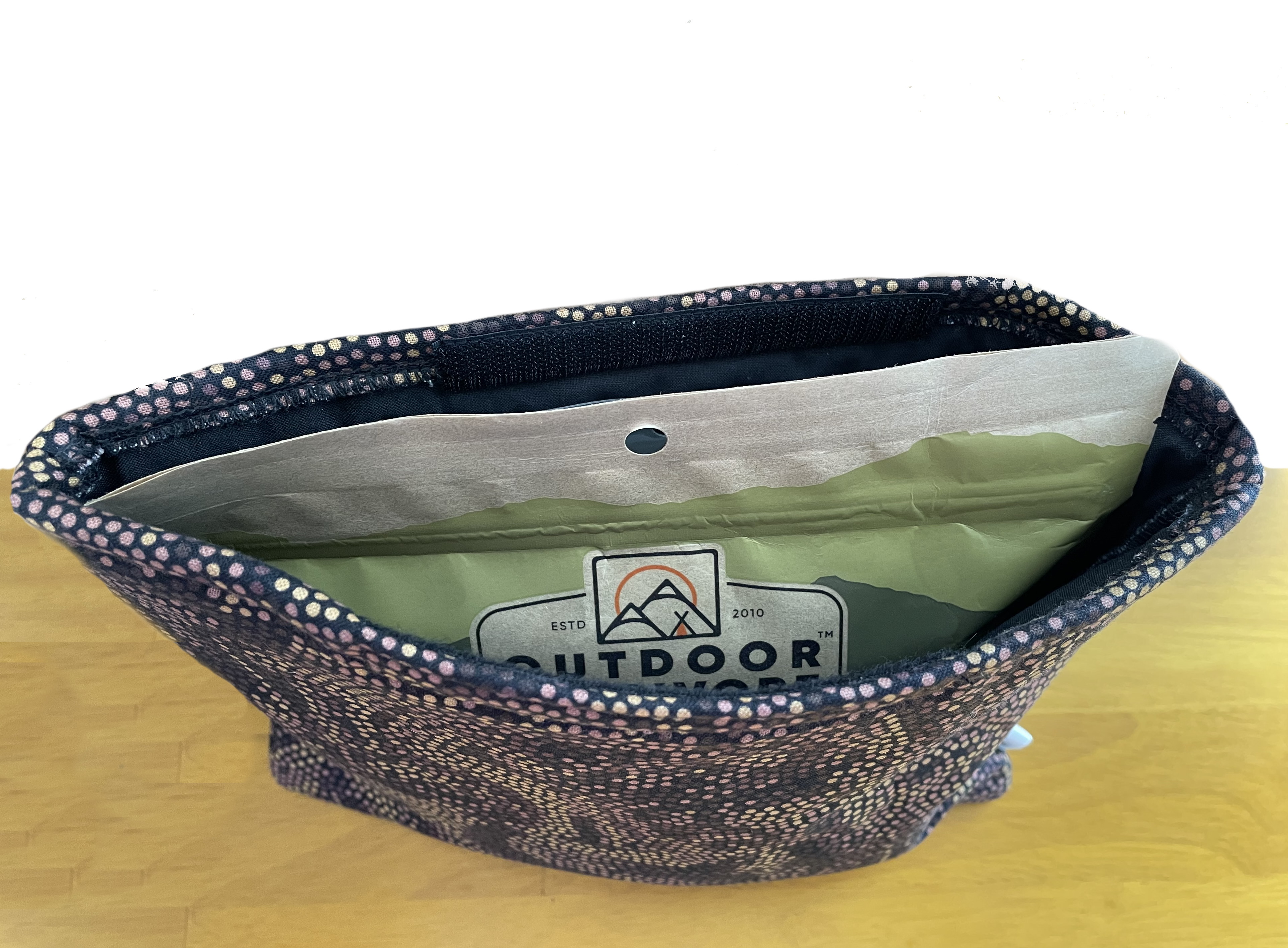 An insulated cozy can keep backpacking food hot in cold and windy conditions or at higher elevations where it’s common for meals to be crunchy due to underheating. An insulated cozy can keep backpacking food hot in cold and windy conditions or at higher elevations where it’s common for meals to be crunchy due to underheating. | 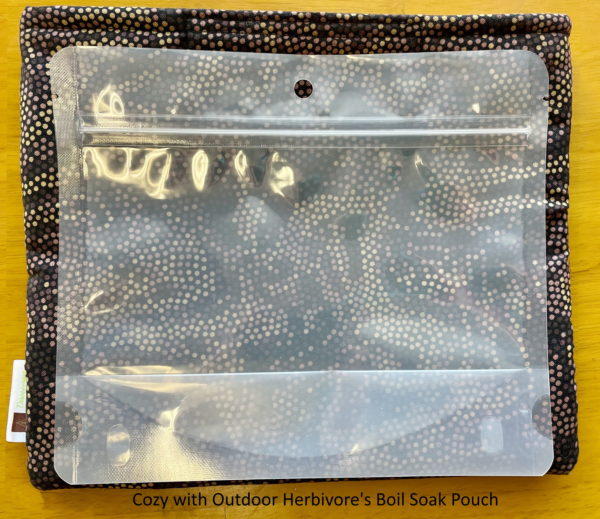 |
Environmentally friendly dried food storage options
Glass mason jars offer excellent oxygen and moisture barrier and are reusable. You can repurpose pickle jars, pasta sauce jars, salsa bottles, and other jars for storing your dried food at home. However, you’ll need to transfer them to a bag before you hit the trail. “Greener” bags might work for short-term backpacking food storage, but disposing of them can be challenging.
Here’s a look at the options –
Biodegradable Food Packaging
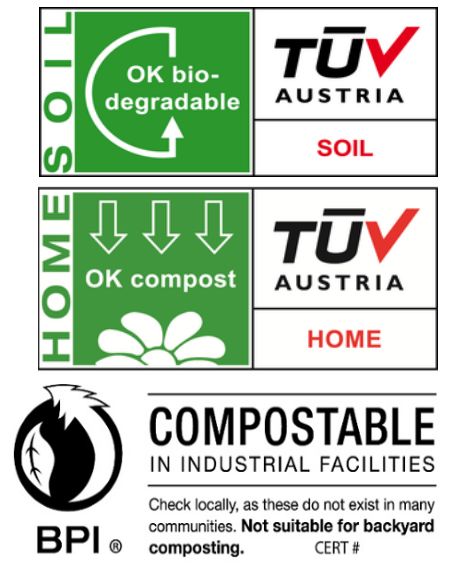
Most plastic films have decomposition rates exceeding 100 years, whereas biodegradable plastics break down to their natural components within one year. Simply adding biodegradable starch or engineered microbes as a resin to plastic can allow decomposition within a few months under certain conditions. If you rehydrate in the bag, check that the resin is edible.
- Bioplastics should meet ASTM D5526 biodegradation standards.
- Industrial compostable packaging are required to meet internationally agreed standards such as EN13432 or ASTM D6400 (USA).
- Home compostable packaging has no internationally agreed certification standard. Some countries have their own standards (the U.S. does not). TUV is an internationally recognized certification body.
- For more information about green claims made within the U.S. , see the FTC’s “Green Guide Summary.”
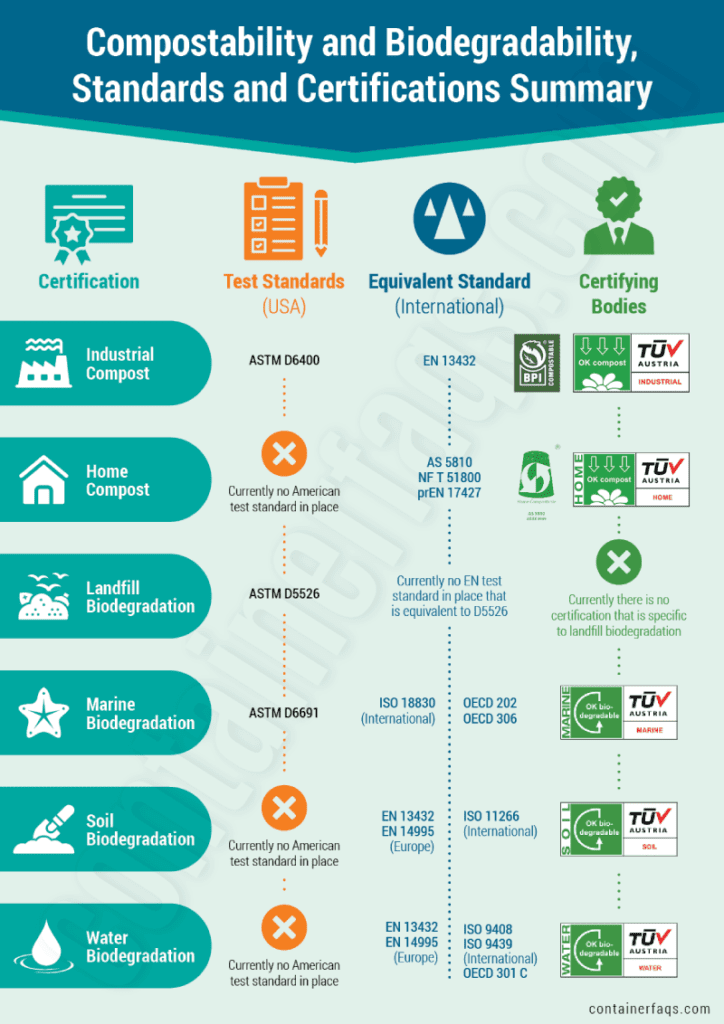
Recyclable Food Packaging
Recycling food packaging is impractical due to the mixed plastic structure and lack of demand for the recycled content. The individual film layers that make up the laminated structure are difficult to separate, and bags get tangled up in the recycling equipment, causing problems. You can find barrier storage bags made of single films like Polyethylene (PE) that are suitable for a special recycling process known as “Store Drop-off”, however, industry experts have shared that most bags deposited at participating stores end up landfilled or incinerated instead of recycled. Unfortunately, the entire process of collecting, sorting, transporting, and reprocessing plastic waste is cost-prohibitive, plus there are not enough buyers willing to pay the higher price of the recycled content.[1]
The recycling market is constantly shifting, and we know what works in the meantime: reducing plastic. At Outdoor Herbivore, we reduce our use of plastic by packaging our meals in a paper structure lined with a thin layer of plastic to make it waterproof. We also minimize waste by keeping our packaging compact.
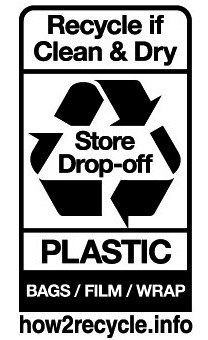
Foods to Store
Making meal packets is a great way to control calories, costs, and ingredients. Dehydrate your favorite recipes during the off-season and store them for your next adventure, or repack any non-perishable foods you find on sale that you know you’ll eat on the trail. Some good choices of store-bought foods to pack may include the following:
- Ready-to-eat and instant hot cereals (muesli, granola, cornflakes, rice/quinoa puffs, etc.)
- Dried soup mixes
- Instant staples (pasta, couscous, rice, quinoa, potato flakes, powdered eggs, bean flakes, lentils, etc.)
- Dried dinners (macaroni and cheese, rice and bean mixes, pasta mixes, ramen noodles)
- Packaged mixes (hummus mix, spice mix, vegetable bouillon, gravy mix, dressing mix)
- Drink mixes (instant coffee, hot chocolate mix, smoothie mix, electrolyte mix, milk powder, etc.)
- Dried vegetables, fruits, and jerky
- Bulk mixes from Outdoor Herbivore
References
[1]The Collection Of. (2020) A Cost-Benefit Analysis of Recycling in The U.S. | Manhattan Institute. Retrieved November 08, 2022, from https://www.manhattan-institute.org/recycling-cost-benefit-analysis#notes
[2] https://www.matweb.com/search/DataSheet.aspx?MatGUID=9ff98d958a714b2a8a00990a929d6f14&ckck=1
[3] https://www.foodsafety.gov/food-safety-charts/safe-minimum-internal-temperatures
[4] https://www.biodeg.org/subjects-of-interest/bio-based-plastics/
Related Posts:
